Ballymartin House
Houses within 5km of this house
Displaying 27 houses.
Houses within 5km of Ballymartin House
Displaying 27 houses.
| House name | Description | |
|---|---|---|
| Belvidere | This house was unoccupied in 1814. Mrs Maria Peard was the occupier in the mid 19th century holding the property from Henry Peard, it was valued at £15.12 shillings. Hajba writes that the Peards sold the estate to the Pope family who occupied the house until the early 20th century. |
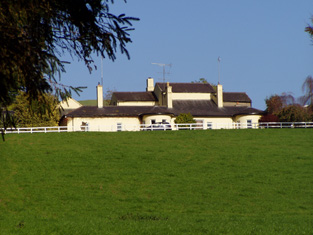
|
| Castleview | Castleview was the home of the Gumbleton family held from Henry Peard in the mid 19th century and valued at £68.15 shillings. The house remained in Gumbleton possession until the early 20th century but is now demolished. Bence Jones lists this house under the name Glynnatore and writes that it was built in 1791 by R. W. Gumbleton. In 1894 Slater notes Glenatore as the seat of Mrs. Gumbleton. | |
| Kilmacow | Located on the Devonshire estate, on the Cork/Waterford border, Kilmacow was occupied by John Boyce in 1814 and by William John Day in the early 1850s. The buildings were valued at £12. Bought by John Murphy of Tallow in the late 19th century and still extant. |
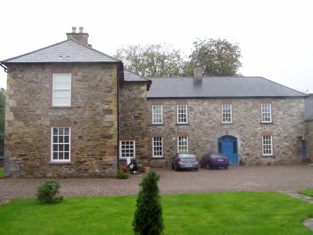
|
| Curraglass House | Part of the Lysaght estate from the mid 18th century, W. and L. Giles are recorded at Curraglass in 1814. Earlier, in 1786, Wilson refers to it as the seat of Mr. Bonwell. By 1837 W. Gumbleton was resident and his widow Mrs Georgina Gumbleton occupied the house in the early 1850s. It was valued at £58+. Hajba writes that she was the last occupant of the house which is now demolished. | |
| Lismore Castle | The castle belonged to Sir Walter Raleigh who sold the property to Sir Richard Boyle in 1602. Charlotte Elizabeth Boyle, the daughter and heiress of the 4th Earl of Cork, married William Spencer Cavendish, 4th Duke of Devonshire and when she died in 1754 the estate passed to the Cavendish family. At the time of Griffith's Valuation, the castle was valued at £140. The 1943 ITA survey contains an extensive description of the castle and its grounds at that time. It has remained in the hands of the Cavendish (Devonshire) estate, housing a prestigous art gallery. See www.lismorecastle.com. |

|
| Janeville (County Waterford) | Janewille House was vacant at the time of Griffith's Valuation, when it was part of the Ussher estate and valued at £22 10s. A second house [X027936] in the same location was leased by Henry Smyth from the Ussher estate and valued at £15 10s. In 1837 Lewis refers to Janeville as the seat of A. Keily. Wilson, writing in 1786, refers to it as the seat of John Keily. The house is no longer extant. | |
| Ballinanchor House | Ballinanchor was owned by Thomas Foley in 1851 when it was vacant and valued at £12. In 1814, Leet refers to it as the residence of Captain Thomas Poole. A house and farm still exist at the site. | |
| Ballygally House | Ballygally House was the property of Nelson T. Foley in 1851 when it was vacant and valued at £27 10s. In 1837 Lewis refers to it as "the occasional residence of G. Holmes Jackson". It is still extant and occupied. |

|
| Ballyin Flour Mill | In 1851, Nelson T. Foley was leasing this property, including a substantial flour mill. from the Devonshire estate when it was valued at £110. The mill building is now derelict. |

|
| Flowerhill House (Waterford) | Flowerhill was leased by Nelson T. Foley to Barry Drew in 1851. Lewis also refers to it as the seat of B. Drew, describing it as " a beautiful residence in the cottage style". The house is no longer extant. | |
| Toortane House | In 1851 Thomas Foley was leasing this property from the Devonshire estate when it was valued at £33 10s. Lewis refers to it as his seat in 1837. It is still extant and occupied, having been restored. |

|
| Ashbourne House | In 1851 Edmond Foley was leasing this property from the Devonshire estate when it was valued at £21 10s. It is labelled Ashbourne House on the later 25-inch Ordnance Survey Map. | |
| Elgin Cottage | In 1851 this property was leased by Georgiana Gumbleton to Edmund Barry when it was valued at £10. It was built after the 1st edition Ordnance map and is labelled Elgin Cottage on the 25-inch edition of the 1890s. There is still an extant house at the site. | |
| Fortwilliam House (Waterford) | In 1851 J.B. Gumbleton held this property in fee when it was valued at £47 10s. Lewis also refers to it as his seat in 1837 when he describes it as " a handsome demesne with a new house being erected". The ITA survey noted it as the residence of Mr. P. Dunne in 1942. Fortwilliam is still extant and occupied. In 2024 it was offered for sale. |
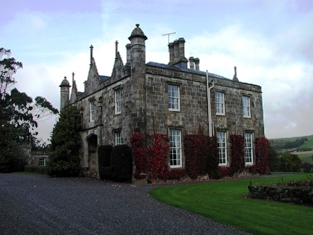
|
| Ballyduff Castle Farm | Described as Ballyduff Castle (in ruins) on the 1st edition Ordnance Survey map, these buildings were valued at £11 15s at the time of Griffith's Valuation. They were being leased by Edward Walsh from the Musgrave estate. The National Inventory of Architectural Heritage suggests the house was built c.1825. The ruined fortified house at the site dates from the early seventeenth century. |
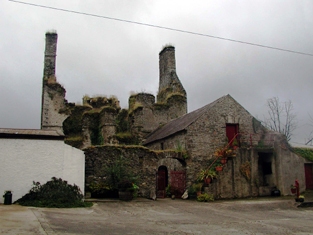
|
| Glenmore House (Lismore) | At the time of Griffith's Valuation, Thomas Boyce was leasing this property to Richard Cliffe, when it was valued at £24. A very substantial farmyard is labelled at this site on the 1st edition Ordnance Survey Map. It is labelled Glenmore House on the later 25-inch edition. It is still extant and occupied. |
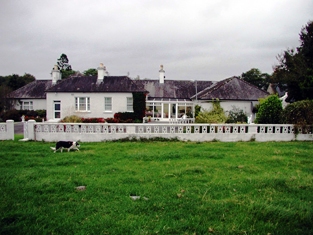
|
| Ballysaggartmore House | Held in fee by Arthur Ussher at the time of Griffith's Valuation, when it was valued at £68. Lewis refers to it as the seat of A Keily in 1837 when he describes the demesne as "ample and tastefully planned". Local sources suggest Arthur Keily-Ussher commenced building a lavish castle in 1850. The extravagent entrance depleted his funds and the castle was never completed. It was later purchased by the Woodruffe family. In 1906 it was the property of Richard Woodroffe and valued at £68. The house was burned in 1922 and demolished in the 1930s. The elaborate towers are still extant and part of the demesne is a Forestry Service amenity area. |
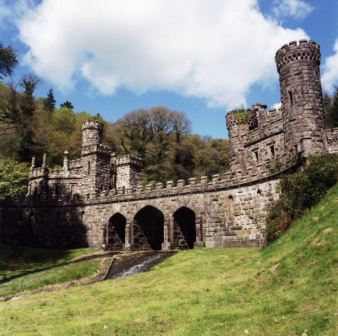
|
| Deerpark (Lismore) | Arthur Ussher held in fee a farmhouse and farmyard at Deerpark, valued at £16 10s, in 1851. Extensive farm buildings still exist at the site. | |
| Glencairn Abbey | Glencairn was held in fee by Jervis (Gervase) P. Bushe in 1851 when it was valued at £51. The property had previously been part of a Gumbleton estate, firstly as Ballygarron Castle and later, in the eighteenth century, a house known as Castlerichard. Wilson records it under this name in 1786, describing it as "the beautiful seat of Mr. Gumbleton". Its name was changed to Glencairn Abbey c.1814 when it was substantially altered and extended by Richard Edward Gumbleton. Following his death in 1819 it passed to his brother-in-law Henry A. Bushe, in whose family it remained until the 1880s. It became a Power property following the marriage of Frances Bushe and Ambrose Power of Barrettstown, county Tipperary. It was owned by the representatives of Gervase Bushe in 1906 and valued at £31. The Powers continued to occupy Glencairn until 1922. It was purchased by the Cistercian Order in 1926 and has been home to the Cistercian Sisters since. The substantial steward's house and farmyard [X009983] is now the home of the Barry family who provide guest accommodation there. In 1906 it was also held by Bushe's representatives and valued at £12. |
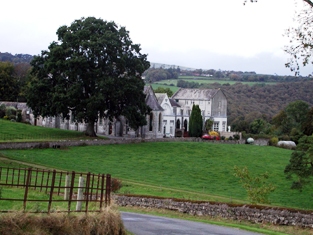
|
| Lisfinny House | Major Edward Croker was leasing this house from the Devonshire estate in 1851 when it was valued at £23. Lewis also recorded it as his residence in 1837 when he noted that "the ancient castle, built by the Earl of Desmond, has been converted into a handsome residence". It is still extant and occupied. |
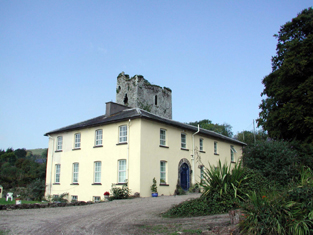
|
| Lismore Villa | Leased by the Devonshire estate to H.K. Hemming at the time of Griffith's Valuation, when it was valued at £30. It is still extant. |

|
| Lismore Townparks West | In 1851 William Baldwin was leasing this property from the Devonshire estate when it was valued at £11. | |
| Castle Farm | IN 1851 the farmhouse at Castlelands was held in fee by the Devonshire estate and valued at £27. The farm house is still extant and occupied. A large farmyard complex was located at X035986. In 1906 the buildings at this location had a valuation of £15 10s. |

|
| Glenbeg House (Lismore) | In 1851 Glenbeg House was owned by Thomas Foley but was vacant. It was valued at £23 10s at that time. In 1837 Lewis refers to it as the seat of G. Bennett Jackson. The original house dates from the mid-sveenteenth century though it was renovated in the nineteenth and twentieth centuries. Smith, writing in 1774, refers to it as the seat of Mr. John Jackson. Sadleir, referring to Rowland Jackson in 1775, notes that he was "of Glanbeg". Brady notes that the Jacksons were employed by the first Earl of Cork in the early seventeenth century. Described as "an ordinary farmhouse" in the ITA Survey in 1942. It is still extant and occupied. |

|
| Kilmore House (Tallow) | Held in fee by Rev. William Percival at the time of Griffith's Valuation, when it was valued at £37. Lewis refers to it in 1837 as "Kilmore Hill, residence of Rev. W. Percival, a handsome seat on the new line of road to Youghal". Wilson, writing in 1786, refers to the Perceval residence near Tallow as "Kilmahoe". In 1906 it was still owned by William Percival and valued at £37 10s. |
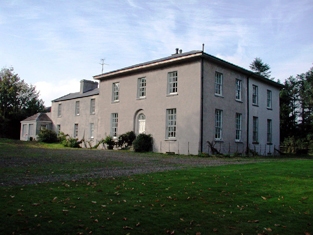
|
| Roseville (Tallow) | Leased by William Parker from the Devonshire estate at the time of Griffith's Valuation when the buildings were valued at £20 10s. It is also recorded as his address in the 1870s. Roseville is still extant and occupied. |

|
| Mayfield (Lismore) | The sale notice concerning the property of Robert Dring O'Grady in the barony of Coshmore and Coshbride, county Waterford, includes details of the house built on the property by Captain O'Grady in the 1850s. It was "of modern construction" and had cost over £1200. |
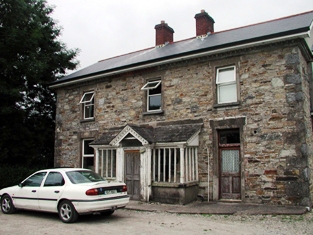
|

